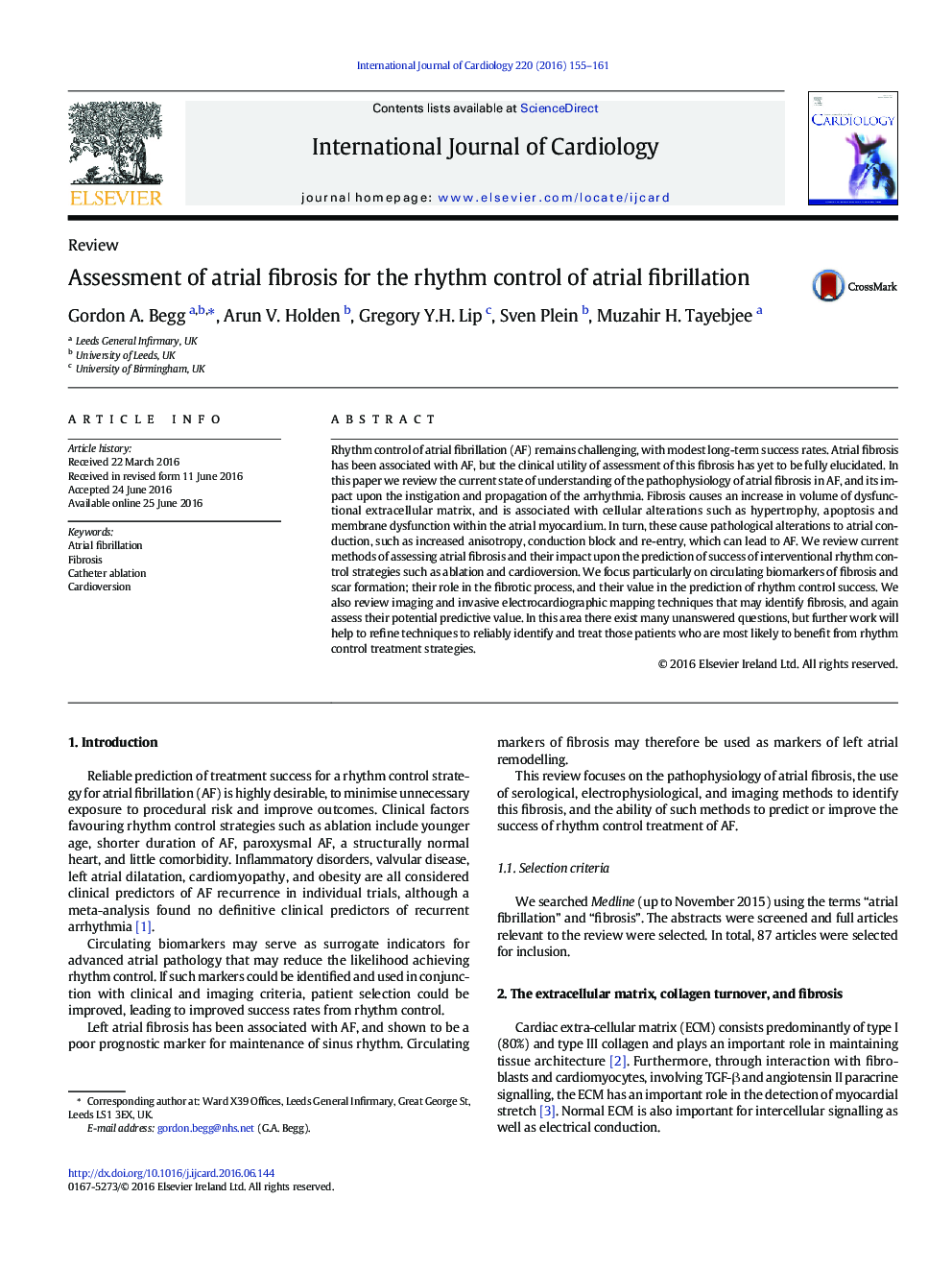| کد مقاله | کد نشریه | سال انتشار | مقاله انگلیسی | نسخه تمام متن |
|---|---|---|---|---|
| 5963323 | 1576128 | 2016 | 7 صفحه PDF | دانلود رایگان |
- Fibrosis and atrial fibrillation are associated, although causation remains unclear.
- Myocardial changes caused by fibrosis result in diverse conduction abnormalities.
- Assessment of fibrosis may aid selection of patients for rhythm control.
- The strengths and weaknesses of these methods are discussed in this article.
Rhythm control of atrial fibrillation (AF) remains challenging, with modest long-term success rates. Atrial fibrosis has been associated with AF, but the clinical utility of assessment of this fibrosis has yet to be fully elucidated. In this paper we review the current state of understanding of the pathophysiology of atrial fibrosis in AF, and its impact upon the instigation and propagation of the arrhythmia. Fibrosis causes an increase in volume of dysfunctional extracellular matrix, and is associated with cellular alterations such as hypertrophy, apoptosis and membrane dysfunction within the atrial myocardium. In turn, these cause pathological alterations to atrial conduction, such as increased anisotropy, conduction block and re-entry, which can lead to AF. We review current methods of assessing atrial fibrosis and their impact upon the prediction of success of interventional rhythm control strategies such as ablation and cardioversion. We focus particularly on circulating biomarkers of fibrosis and scar formation; their role in the fibrotic process, and their value in the prediction of rhythm control success. We also review imaging and invasive electrocardiographic mapping techniques that may identify fibrosis, and again assess their potential predictive value. In this area there exist many unanswered questions, but further work will help to refine techniques to reliably identify and treat those patients who are most likely to benefit from rhythm control treatment strategies.
Journal: International Journal of Cardiology - Volume 220, 1 October 2016, Pages 155-161
